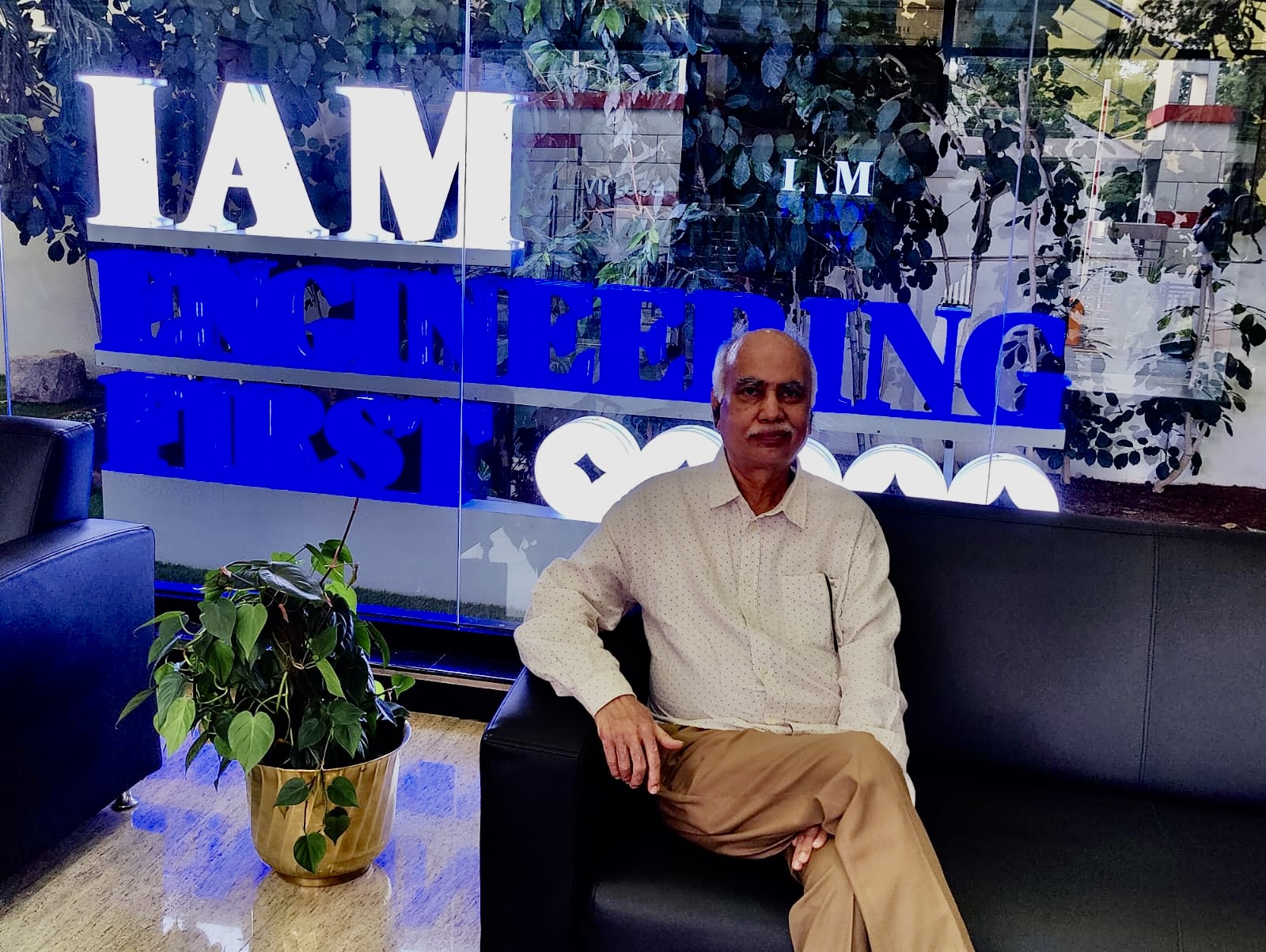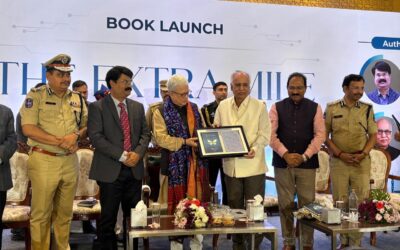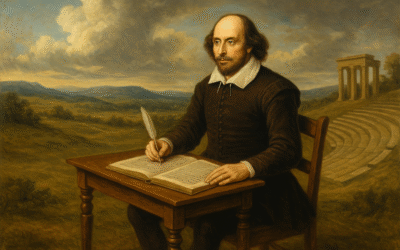
Engineering—The Art of Progress
I graduated with a degree in mechanical engineering and pursued a master’s in design at GB Pant University. I then spent 15 years at DRDO working on missile hardware. Afterwards, I explored biomedical materials, with a focus on civilian spinoffs. Nearly half of my career has involved interdisciplinary work. I primarily worked with doctors and agricultural scientists, and attended conferences on environmental issues. What I realised is that anyone talking about change is truly an engineer.
Engineering is not just a discipline or profession but a blend of creativity and logic, serving as the fundamental force behind humanity’s relentless pursuit of progress. It involves transforming abstract dreams into tangible realities, bridging the gap between what is and what could be. At its core, engineering is the art of progress—a catalyst that propels civilisation forward, crafting the tools, systems, and structures upon which societies thrive.
Engineering is a mindset rooted in problem-solving and innovation. Engineers harness the laws of nature, transforming raw materials and scientific knowledge into practical solutions. This ability to conceive, design, and build is what sets engineering apart as the foundation of progress. Unlike pure science, which seeks to understand, engineering aims to create. It brings theory into practice, giving rise to inventions and infrastructures that redefine what humanity can achieve.
Throughout history, every leap of progress has been underpinned by feats of engineering. Giant Hindu temples, the Egyptian pyramids, the aqueducts of Rome, and the Great Wall of China not only reflect the ambitions of their civilisations but also showcase the ingenuity of the engineers who made them possible. The industrial revolution marked an era in which mechanical engineering transformed societies, introducing the steam engine, mechanized looms, and mass production techniques that fuelled unprecedented economic and social changes.
In the modern era, civil, electrical, chemical, and software engineers have been at the heart of urbanisation, electrification, transportation, and digital revolutions. Every invention, from electricity and the telephone to the microchip and the internet, bears the hallmark of engineering expertise. These advancements have not only increased productivity but also elevated the quality of life, extending life expectancy, reducing poverty, and connecting people across continents.
The role of engineering goes beyond physical creations; it shapes the very fabric of society. Infrastructure—roads, bridges, water supply systems, power grids, and telecommunications—depends on the meticulous work of engineers. These networks form the circulatory system of modern civilisation, enabling trade, communication, education, and healthcare. As I brought out in ‘Decoding the Pandemic’, my book with renowned biologist Prof. Seyed E. Hasnain, written in the wake of the COVID-19 pandemic, the reliability and efficiency of these systems shape the resilience of communities in the face of adversity, such as natural disasters or pandemics.
Moreover, engineering fosters social equity and opportunity. By developing affordable housing, clean water technologies, and sustainable transportation, engineers address pressing societal challenges and work towards reducing disparities. The thoughtful application of engineering principles not only solves immediate problems but also lays the foundation for future generations to thrive. Many great designs are inspired by nature and biology. For example, computers have been revolutionized by the integration of neural networks.
While engineering is rooted in mathematics and science, it is also a profoundly creative pursuit. Like artists, engineers visualise possibilities unseen by others and devise elegant solutions to complex problems. The design of a soaring bridge, a sleek smartphone, or an efficient energy grid requires as much imagination as technical know-how.
This creativity is not limited to grand projects. Everyday items—medical devices, appliances, and vehicles—are products of iterative engineering, where function meets form in innovative ways. The iterative cycle of prototyping, testing, and refining embodies the creative spirit of engineering, where failure is merely a stepping stone to progress.
In the contemporary world, the stakes of engineering are higher than ever. Climate change, resource depletion, and population growth challenge engineers to innovate responsibly. The basic art of engineering now demands a holistic view—balancing technological advancement with environmental stewardship and ethical considerations.
Engineers are at the forefront of developing renewable energy solutions, green architecture, and circular economies. They design systems that conserve resources, reduce waste, and mitigate environmental impact. Sustainable engineering is not a separate discipline, but an evolution of the art itself, integrating progress with the planet’s well-being.
The digital age is perhaps the clearest testament to the role of engineering in progress. Computer engineering, software development, and information technology have revolutionised every aspect of life—from how we learn and collaborate with others, whether for work or fun, transactions or entertainment. The interconnectedness brought about by the Internet and mobile technology amplifies knowledge, democratises access, and accelerates innovation.
Artificial intelligence, robotics, and biotechnology are at the cutting edge of the next wave of progress. These fields, built upon foundational engineering concepts, promise to address challenges in healthcare, transportation, and energy with solutions once deemed science fiction. As boundaries between disciplines blur, the art of engineering is evolving, embracing complexity and interdisciplinarity.
To sustain progress, cultivating engineering talent is imperative. Engineering education not only imparts technical skills but also fosters a mindset of curiosity, resilience, and adaptability. Future engineers must be equipped to tackle problems that are increasingly global in scope and multifaceted in nature.
Engineering has never been an elite enterprise. People from diverse genders, cultures, and backgrounds have contributed, enriching the field with a range of varied perspectives. Progress has come more from the bottom up than from the top down. Inclusive engineering teams are better equipped to anticipate needs, mitigate bias, and deliver solutions that benefit broader communities. As the art of progress, engineering flourishes when it reflects the diversity and dynamism of humanity itself. Dr. Verghese Kurien, a mechanical engineer, revolutionised the dairy industry in India. Another mechanical engineer, Anil Kakodkar, excelled in the Nuclear Energy field. Great global corporations like IBM, Microsoft, and Google are headed and run by Indian engineers. Indian engineers have a strong presence at NASA, making significant contributions across various domains.
In every era and on every continent, engineering has been the driving force behind transformation. Its art lies not only in the mastery of materials and mathematics but also in its vision for a better tomorrow. Progress is not inevitable; it is engineered, shaped by those who dare to imagine and design a new reality. My friend Krishna Yedula , who works there as the Vice President and Pan-India Head–Facilities and Sustainability, clicked this picture in the lobby of the Virtusa Centre at Hyderabad.
As we confront the challenges and possibilities of the future, it is clear that the fundamental art of progress will remain rooted in engineering. It is through the ingenuity, creativity, and ethical resolve of engineers that humanity will continue to advance, building a world that is more resilient, equitable, and inspiring for generations to come. While it is true that progress has brought with it a bundle of problems, it is only through engineering that planet Earth can become more liveable.
In the 21st century, engineering combines creativity, innovation, and technical skills to develop new solutions, enhance existing technologies, and drive societal progress. Engineering isn’t just a technical discipline—it’s also a form of art, requiring imagination and ingenuity to solve complex problems and drive progress. Here’s to the engineers—artists of progress, who turn ‘impossible’ into ‘I’m possible’, one blueprint at a time.
MORE FROM THE BLOG
The Lost Wisdom of Our Kitchens
There is a peculiar magic in the things we eat—an intimacy so daily, so habitual, that it becomes almost invisible. Food enters our bodies the way air enters our lungs: without ceremony, without question. We assume its shapes, its colours, its textures, as though they...
The Extra Mile
Shakespeare once reminded us that life is but a stage; listen closely, and beneath those familiar words, you can hear the soft hum of entrances and exits. Each of us arrives in medias res, as the Latins say—dropped into the middle of a vast, unfolding drama whose...
The Theatre Within
I have been fascinated by Shakespeare, as most of those fancy English phrases and words that enchanted me were created by this one man who lived in England during 1564–1616. I was always intrigued by how one individual could produce such a great body of work that...




Dear Sir, Greetings! What a masterful reflection on the soul of engineering! Your journey—from missile hardware to biomedical materials, and from interdisciplinary collaboration to environmental advocacy—is a testament to the boundless reach of engineering, both as a science and an art. I was especially moved by your insight that “anyone talking about change is truly an engineer.” It reframes engineering not just as a profession, but as a mindset of transformation.
Your writing beautifully captures how engineering bridges imagination and logic, and how its impact ripples through history, society, and the planet. The examples—from ancient temples to neural networks—showcase the elegance and responsibility that come with the craft. I also loved the tribute to inclusive innovation and the celebration of Indian engineers shaping global progress.
Thank you for reminding us that engineering is not just about building things—it’s about building futures. This post is not only inspiring, it’s empowering.
Warm Regards,
Great blog Arun ji. I could relate to as a Chemical Engineer. That back ground helped me in designing and implementing 108/100 projects at large scale for the benefit of a common citizen. Thank you
Good morning sir
Engineering is now a very common profession in india , still we lacks the quality of Indian engineers. Engineering need a person with great knowledge of science & very good command over English. These two factors decrease the quality of the mass pursuing engineering in India .
However many growth are in line and hoping one day we will also inline with countries like germany, france etc .
Engineering mixing with the subjects of social sciences will be a great creativity to do for us Indians, as we are lacking in our core more than the enginnering itself.
Overall 4 G are essential for a human being pursuing life over anything
1) Great knowledge ( either engineering or Social science or both )
2) Great health
3) Great work
4) Great earning
Sir I ask you if you create a youtube channel,
clarifying the concepts of religions, mainly hinduism & buddhism. It’s origin, books & improvement needed in today’s time. Most people like correct enlightenment on this including me .
Also complete history of India, etc .
Thanks sir ,
May I further say that software engineers can indeed be considered more artists than others because their work involves a high degree of creativity, craftsmanship, and problem-solving akin to artistic expression. Unlike traditional engineering, which often focuses on tangible structures and physical systems, software engineering deals with abstract concepts, code, and logic, requiring a delicate balance of technical expertise and innovative thinking.
Creating efficient, elegant, and maintainable code demands a unique blend of artistry—crafting solutions that are not only functional but also refined and optimised. Software engineers often experiment, iterate, and refine their work much like artists, seeking beauty and simplicity in their code while solving complex problems. Their ability to envision new digital experiences, design intuitive interfaces, and develop innovative algorithms showcases the artistic dimension of their
Interesting article.
Wish these aspects of the engineering community are known to more people.
Compliments to you and the entire engineering community.
The art of growth is evident in how engineering tackles challenges—finding efficient, effective, and innovative solutions that promote expansion and improvement. Whether it’s constructing bridges that connect communities, developing renewable energy sources to sustain our planet, or creating cutting-edge communication technologies, engineering acts as a catalyst for universal growth. It blends scientific principles with creative problem-solving, making it a uniquely dynamic and impactful discipline. Thank you Sir.
Engineering is often regarded as both a science and an art, as it involves both technical skill and creative problem-solving. While scientific knowledge and mathematical analysis are vital, engineering also incorporates elements of experience, judgment, and aesthetic considerations. This mixture of technical and artistic components enables engineers to develop functional and visually appealing designs. In my view, engineering and art are not mutually exclusive but rather complementary disciplines that can inform and enhance each other. Very enjoyable read!
What a beautifully articulated tribute to engineering capturing its essence not just as a technical field but as a profound, creative force shaping human progress. The seamless blend of personal experience, historical perspective, and future vision highlights how engineering drives innovation, bridges disciplines, and builds resilient societies. Truly inspiring!
Engineers, by definition, are problem solvers- be it industrial, medical, civil, etc. Now when we talk of engineers, we thing in above terms only. That in my view is compartmentalizing. Engineering, I think, is a very wide term. The day I stop thinking about an innovative way to solve a new problem, I stop being an engineers.
As always, Prof. Tiwari, your insights are both articulate and impressive.
Dear Dr Tiwari Sahab, This is a truly inspiring and thoughtful piece that beautifully shows how engineering is more than just science; it is also creativity and imagination. Your journey from missile technology to biomedical innovations reflects how engineering connects different fields to solve real-world problems. I especially liked how you explained that engineers don’t just build things, they help shape society, improve lives, and make the world more equal and sustainable. Your examples of Indian engineers doing great work globally are very motivating. You’ve rightly said that progress doesn’t happen on its own, it is created by those who think, imagine, and build. Thank you for this powerful reminder that engineers truly are artists of progress.
In a world increasingly shaped by rapid advancements in technology, the very foundations of living a good life are transforming. The age-old pursuit of well-being, once guided primarily by philosophy, culture, and individual experience, is now also influenced by algorithms, digital devices, and artificial intelligence. Who can deny that engineering intertwines human contentment with modern innovation—invites us to reevaluate what it means to live a fulfilling life in the digital era?
When machine learning algorithms curate content, suggest uplifting music, and recommend activities based on an individual’s unique preferences and behavioural patterns, engineering is creating the grandest show ever enacted on the stage of this world. This tailored approach can create a sense of being understood and supported, which is central to happiness. Engineers indeed are the heroes of the new world!
Oh great as usual , a new insight, full of hopes and positivity. That’s what is called Professor Arun Tiwari. I feel full of joy and hopes with positive looks whenever I remember him. Though, he is never forgotten. I don’t find a field where he has not written. Be it the engineering of univers to the engineering facilitating human life on this planet. In fact, I eagrly wait looking for his next blog.
I wish all his blogs will appear in the form of books and will be available for generations as aspirations.
Long live Professor Arun Tiwari and your creativity.
Dear Arun ji, Just read your thoughtful and inspiring blog. Enjoyed your explanation as to what engineering means in the true sense. I can now say with confidence that selecting agriculture and not engineering as a discipline was no regret. One can bring in change for the better in all walks of life. This is exactly what I believed and practised, and I can now relate to what you mean. Serving society with a human face is also engineering. Hats off to you for your powerful and inspiring explanation of what engineering means in the true sense. Grateful for sharing your thoughts.
I thoroughly enjoyed reading this article, Sir. Thank you. Being an engineer myself, I could relate to every point you mentioned.
Having worked closely with the medical fraternity for over two and a half decades, I am often asked, ‘What kind of engineering are you doing with doctors in a hospital?’ What has fascinated me most over the years is how doctors apply their experience and intuition in treating patients. While their approaches may not always follow textbook rules, they often arrive at highly effective solutions. This is where we, as engineers, step in—to decode these methodologies, understand the underlying factors, and analyze them through the lens of engineering.
The rise of AI in healthcare will demand even closer collaboration between engineers and clinicians to build impactful, patient-centric solutions. Engineering, after all, touches every field and that’s what makes it such a compelling and dynamic discipline.
The title of this blog, ‘Engineering – The Art of Progress,’ truly captures the essence of our field in today’s world.
Thank you so much, Arunji, for the opportunity to host you at my office. Your mere presence adds aura and dignity wherever you are!
And thank you for sharing such a deeply inspiring reflection on the essence and impact of engineering. Your journey—from missile technology to biomedical innovation—beautifully illustrates the interdisciplinary nature of engineering and how it touches every facet of life.
I was particularly struck by your insight that “anyone talking about change is truly an engineer.” It reframes engineering not just as a profession, but as a mindset—rooted in curiosity, creativity, and the relentless pursuit of progress. The way you’ve tied engineering to history, society, and sustainability shows a rare and holistic perspective.
Your words remind us that true engineering is about more than machines or equations—it’s about shaping a better, more resilient world. Thank you for celebrating not just the science, but the soul of engineering.
You made me feel good about becoming an engineer. The next decade promises exciting possibilities. Virtual reality (VR) and augmented reality (AR) are set to revolutionise how we experience joy and connection. VR meditation retreats, AR-enhanced nature walks, and immersive social platforms can transport users beyond the limits of time and space, offering new forms of enrichment and escape. Similarly, advances in biofeedback and neurotechnology may enable more precise modulation of mood and stress, allowing users to “tune” their emotional states through wearable devices or even direct neural stimulation. Personalised well-being coaches—powered by AI—could offer continuous, adaptive guidance based on real-time data, reshaping the contours of daily life. At the same time, the movement for “digital well-being” is gathering steam. Designers, policymakers, and technologists are collaborating to create technologies that prioritise user flourishing, emphasise transparency, and reduce harmful side effects. Ethical frameworks are being developed to ensure that innovation serves genuine human needs.
Shri Arun Tiwari’s blog, ‘Engineering – The Art of Progress,’ offers a compelling perspective on the role of engineering in current society. He masterfully argues that engineering is more than a technical discipline; it is a blend of creativity and logic that drives human progress (and has driven it since the beginning of civilisation). His anecdote provides a unique and insightful foundation for broader claims, making the blog both relatable and thought-provoking. Shri Tiwari-ji effectively elevates the status of engineers from mere problem-solvers to visionaries who shape the very fabric of civilisation. Warm regards,
Prof Tiwari, Excellent treatise this is on what was, is and will constantly be Engineering around us and our lives! Thank you for the reflection.
This is a deeply inspiring reflection on how engineering, when driven by purpose and empathy, becomes a true catalyst for societal transformation. Your journey—from defense technologies to biomedical innovation—beautifully illustrates that progress is not just technical advancement, but a commitment to serving humanity. A powerful reminder that engineering is, indeed, the art of progress.
Dear Prof
Very well put! Engineering feats shape and transform the world, for better or for worse.
As a medical doctor, I wish all engineers would take the oath of “do no harm” like doctors.